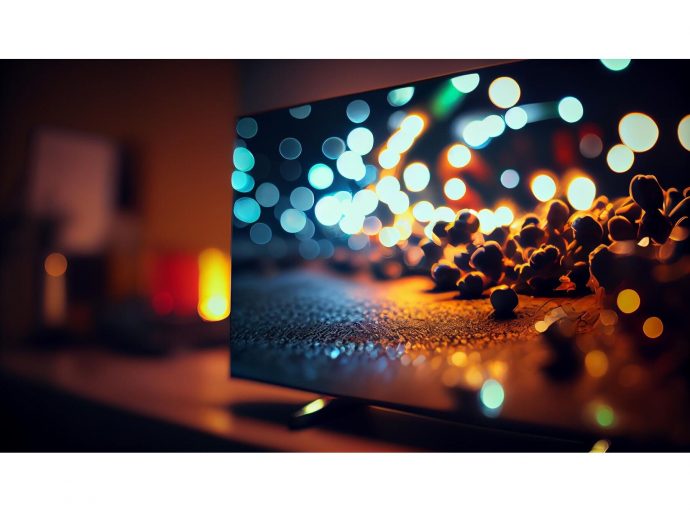Categories more
- Adventures (17)
- Arts / Collectables (15)
- Automotive (37)
- Aviation (11)
- Bath, Body, & Health (77)
- Children (6)
- Cigars / Spirits (32)
- Cuisine (16)
- Design/Architecture (22)
- Electronics (13)
- Entertainment (4)
- Event Planning (5)
- Fashion (46)
- Finance (9)
- Gifts / Misc (6)
- Home Decor (45)
- Jewelry (41)
- Pets (3)
- Philanthropy (1)
- Real Estate (16)
- Services (23)
- Sports / Golf (14)
- Vacation / Travel (59)
- Watches / Pens (14)
- Wines / Vines (24)
- Yachting / Boating (17)
5 of the Most Expensive TVs You Can Buy
Published
03/04/2024Revealing the Top 5 Most Expensive TVs for the Ultimate Viewing Experience
If you are someone who enjoys indulging in top-of-the-line technology and luxury items, then investing in an expensive TV with VPN apps, like to unblock Dazn, maybe something that you have considered. While traditional televisions were once considered a basic household item, modern TVs with VPN apps have become more than just a means of entertainment - they now provide an immersive experience that can completely transform your living room.
Great example of those apps is VeePN. So whether you are looking to upgrade your current TV or simply want to admire some of the most expensive TVs on the market, here are five options that may catch your eye.
1. The Samsung Q950TS: A Stunning Combination of Design and Technology
At a whopping price tag of $15,000, the Samsung Q950TS is certainly not for the faint-hearted. But with its sleek and stunning design, this TV is sure to make an impression in any room. It features a massive 85-inch screen with a resolution of 8K, providing the ultimate viewing experience. Additionally, it comes with built-in speakers and voice control technology for added convenience.
2. The LG ZX Series: Delivering an Unmatched Visual Experience
Another top contender on our list is the LG ZX Series, priced at $20,000. This TV boasts an impressive display of 88 inches with a resolution of 8K as well. It also features LG's OLED technology, which enhances contrast and color accuracy for a truly immersive visual experience.It’s also one of the best smart TVs out there, so with your Verizon internet connection you will be able to make full use of this TV set and really make it an amazing part of your home overall.
3. The Sony Z9G: A Premium TV with Cutting-Edge Technology
Retailing at $70,000, the Sony Z9G is a true luxury item for those who can afford it. The 85-inch screen is powered by Sony's X1 Ultimate processor, providing stunning visuals and an unparalleled level of detail. This TV also features advanced sound technology for a fully immersive experience.
4. Samsung 'The Wall' - A Revolutionary TV with Endless Possibilities
Standing at 292 inches, Samsung's 'The Wall' is not just a TV but a masterpiece. With its modular design, it can be customized to fit any space and meet any viewing needs. This groundbreaking technology comes with a price tag of $1.2 million, making it the most expensive TV on our list.
In addition to its impressive size and flexibility, 'The Wall' also offers a seamless viewing experience with its MicroLED display technology. This allows for true-to-life colors and deep blacks, creating an immersive and high-quality visual experience.
5. C Seed 262: The Ultimate Outdoor TV for the Rich and Famous
For those who want to take their TV viewing outdoors, the C Seed 262 is the ultimate option. Priced at a staggering $1.5 million, this TV boasts a massive 262-inch screen with 4K resolution and an integrated sound system for optimal outdoor viewing.
Future Developments in High-End TV Market
The race is between the manufacturers of the most expensive TVs. It is a difficult task to put innovation before the artist’s work on the one hand and to ensure that a high level of quality and art craft is kept on the other. As technology art integration is further accomplished, tomorrow of luxury TVs will probably be characterized by even more exclusive designs, materials and technologies
The Integrated Services Function
Consequently, the integrated solutions will be improved and will continue to get “smarter” , getting more personal in the comfort of one’s home. Anticipate closer partnerships between TV makers and content producers for personalized content packages.
Sustainability and Environmental Impact
The modern-day consumer, including the luxury ones, is becoming rather concerned about sustainability through the path of consumption. In this new mindset, the luxury TV market will have to find ways of minimizing waste and reducing energy consumption while still maintaining its high-performance standards.
Design That Disappears
A trend to look out for is the movement towards ‘vanishing’ TVs. Technologies that can make TV look like a piece of art or even mingle with the wall when not functioning are being invested in by companies. Such focus on design flexibility will probably characterize the future of luxury TVs.
Conclusion
Luxury TVs, however, are not only about the ultimate in-home entertainment but also a demonstration of the best that modern design and craftsmanship can achieve. But then again, as we have already mentioned, the most costly TVs are not just appliances; they are also the aspirational messengers of what technology can do for us. In the fast-changing world of home entertainment, they raise the standard for high-definition viewing experience.
But for the lucky few who can buy such a television, these TVs provide a peek into the future, while the rest of us will just look upon them as indications of a life of privilege we will have to live without. And we all will dream, for it is the never-ending search for bigger screens, richer colors, and deeper sound that will generate the next generation, and another, and another of TVs. The rectification of technology may be unattainable, but its repercussions are always unavoidable.
















